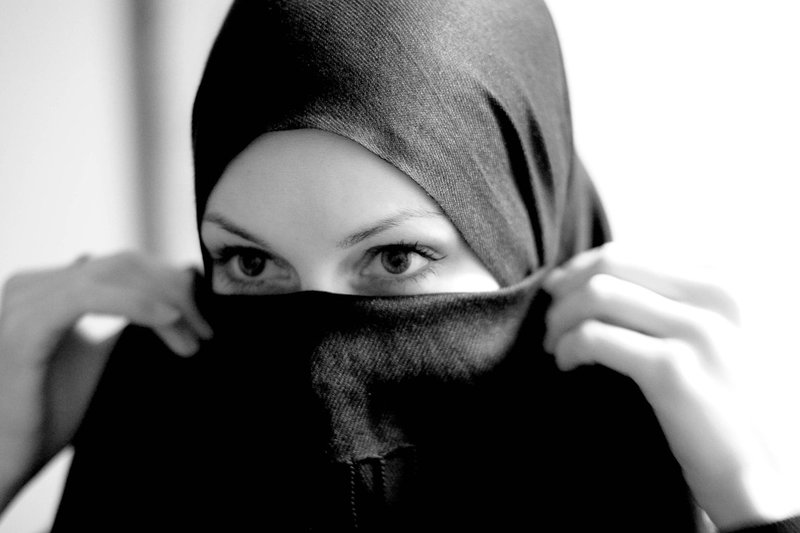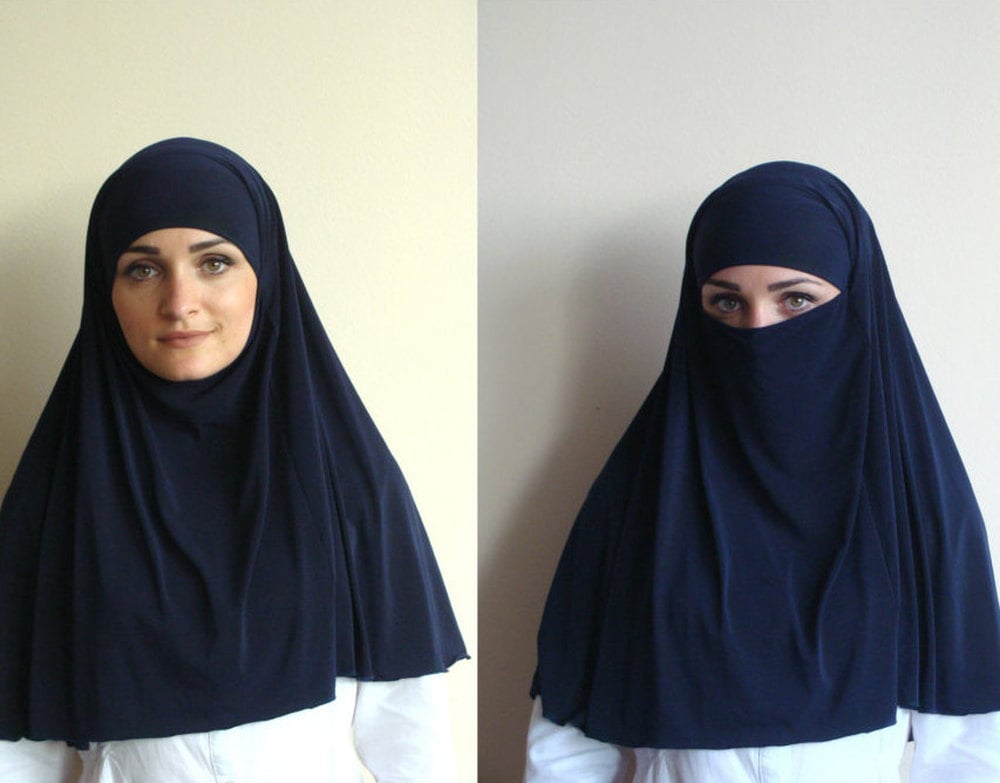В исламе, хиджаб – это любая женская одежда, скрывающая тело с головы до пят. В буквальном смысле, при переводе с арабского языка, хиджаб – это занавес, преграда. В мире православных, хиджабом считается только традиционный арабский платок, который скрывает волосы и лицо, оставляя прорези для глаз.
В мире мусульман нет особого закона о ношении хиджаба. Но сама культура, основанная на религии, обязывает женщин прикрыть соблазнительные части тела, оставив лишь глаза. В святом писании (Коране) ношение скрывающей одежды обязывает соблюдать закон всех женщин, вне зависимости от вероисповедания.
Хиджаб в повседневности
Если для девушек-мусульманок, проживающих на территории арабских стран, ношение хиджаба – норма, то в Европейских странах дела обстоят иначе. Судя по отзывам беженцев, нашедших пристанище на территории Западной Европы, ношение хиджаба доставляет массу неудобств.
- большинство работодателей требуют, чтобы мусульмане на рабочих местах не скрывали лицо;
- полиция насторожено относится к женщинам в хиджабе и часто останавливает для проверки документов;
- у детей в школах серьезные проблемы в общении со сверстниками, которые не согласны принимать чужую культуру;
- к мусульманкам в хиджабе негативно настроено местное население, которое видит в женщинах угрозу собственной безопасности.
Обратная сторона медали
Понять европейцев, защищающих собственную культуру, можно. Ведь в любой арабской стране, законы обязывают туристов надевать скрывающую тело одежду (хиджаб), при выходе в город. Посещение магазинов, исторических достопримечательностей, общих пляжей и других общественных мест, в открытой одежде будет воспринят, как оскорбление культуры.
Выходит, что европейцы, попросту ввели зеркальные меры по отношению к мусульманам на собственной территории. Плюс, Западная Европа всегда отстаивала собственную религию, не разрешая отдельным государствам вмешиваться в многовековые традиции. Поэтому беженцам, как и туристам, остается принять культуру той страны, на территории которой они находятся.




